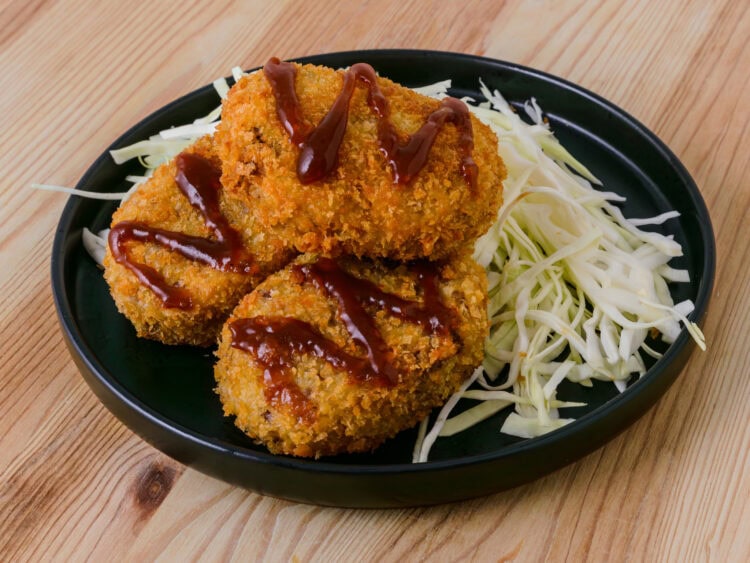Crispy on the outside, creamy on the inside… Japanese korokke are a delicious step up from classic potato croquettes
In Japanese cuisine, these croquettes are popular street food. They’re also easy to make at home from scratch.
Korokke: What is it?
Korokke, as you’ve probably gathered, are Japanese croquettes made with “hoku hoku” mashed potatoes… Nothing earth‑shattering so far. But that’s where it gets interesting, because this mash is enriched and mixed with sautéed ground beef and onion.
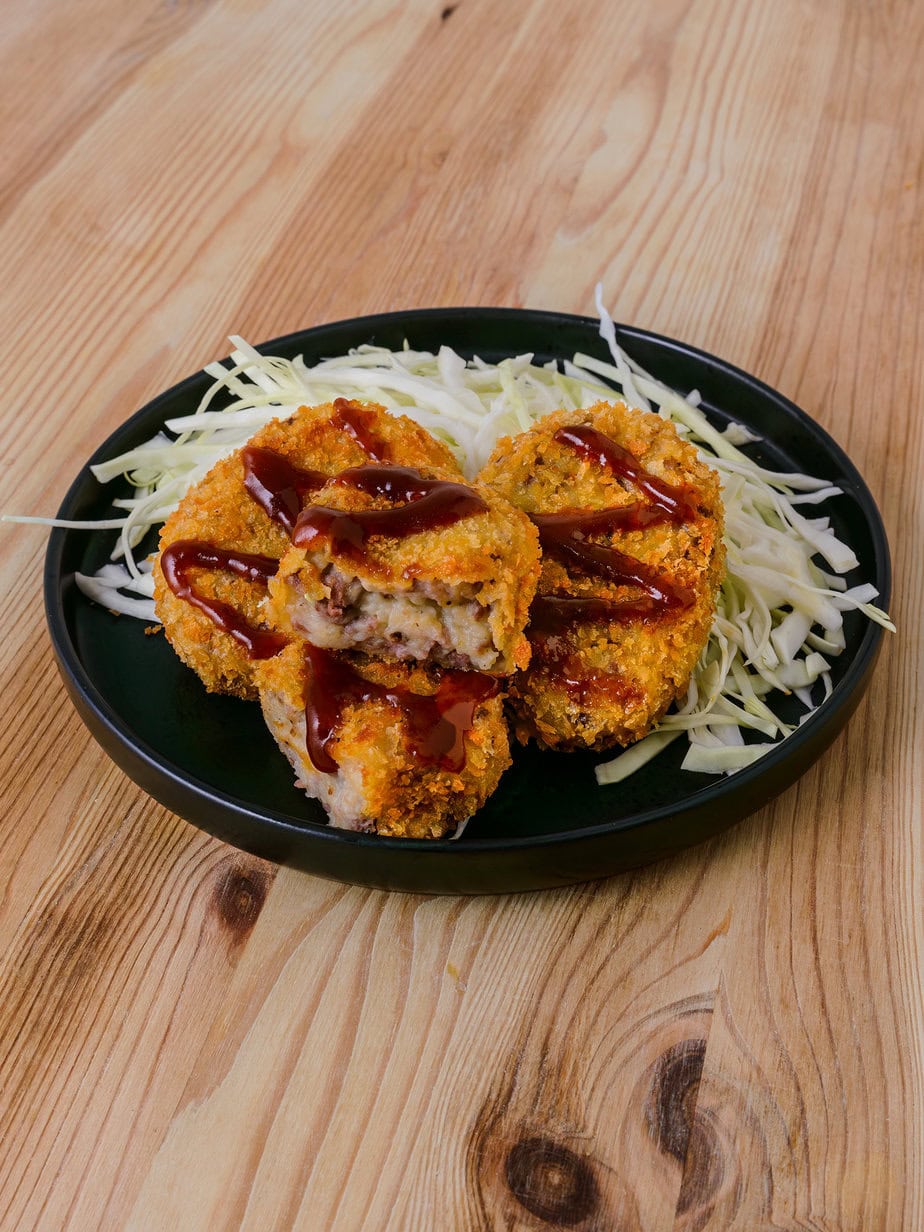
They’re lightly flattened, golden croquettes, coated in panko and fried. They’re mouthwatering at first glance. What we especially love about korokke is the striking contrast between the super‑soft interior and the ultra‑crispy exterior. Each bite is indulgent and satisfying without feeling heavy.
So what exactly is this “hoku hoku” mash? In Japanese, food textures are often described with onomatopoeia—much like the “squeak‑squeak” of cheese in Québécois poutine. There isn’t a direct translation; the image speaks for itself. You’ll just have to try korokke and see!
Where does korokke come from?
Korokke is thought to have been introduced to Japan in the late 1800s as a potato‑based take on the creamy French croquettes of the time. There was strong Western influence then, but dairy products were scarce in Japan.
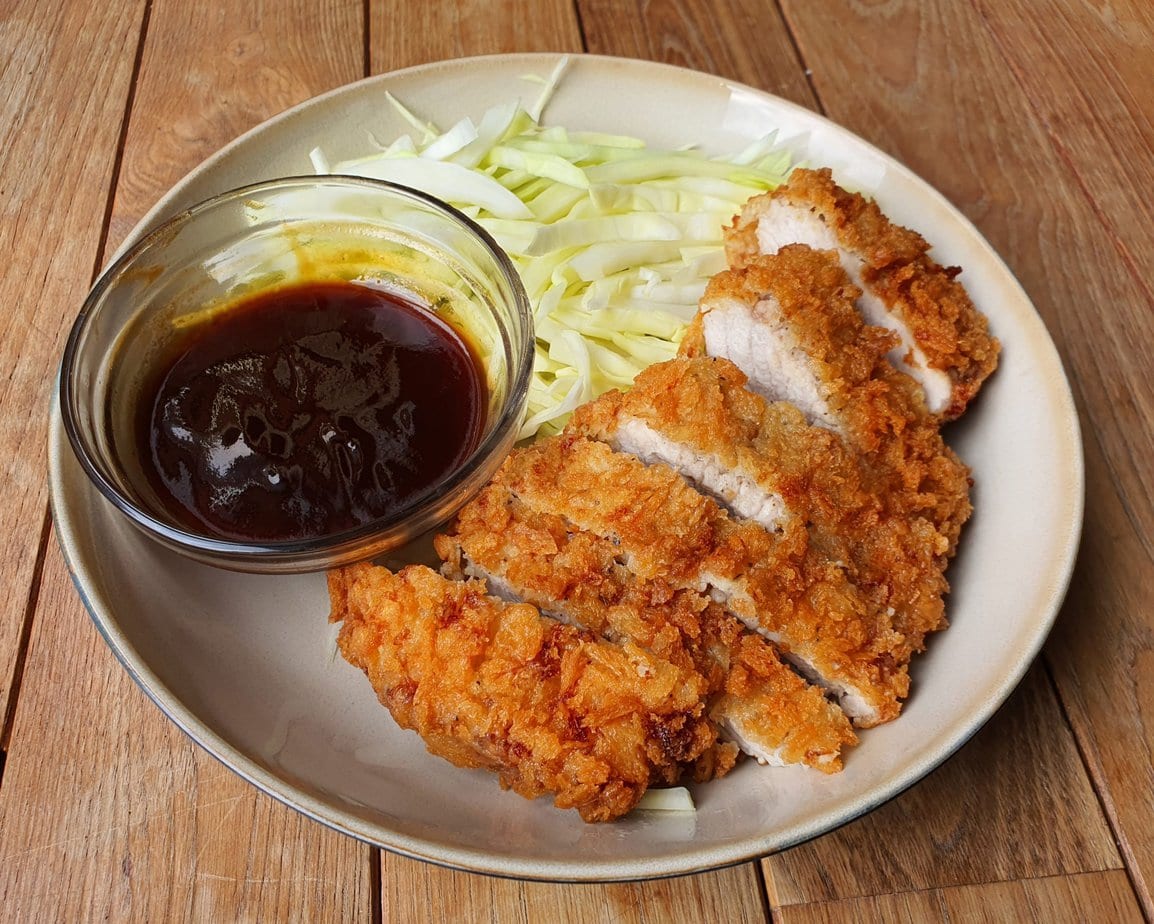
That’s more or less how korokke first appeared: like duchess potatoes, but in a Japanese guise—and, let’s admit it, even more flavorful. Korokke went on to become one of the most popular yoshoku dishes of the early 1900s, alongside pork tonkatsu and omurice
Main ingredients for korokke
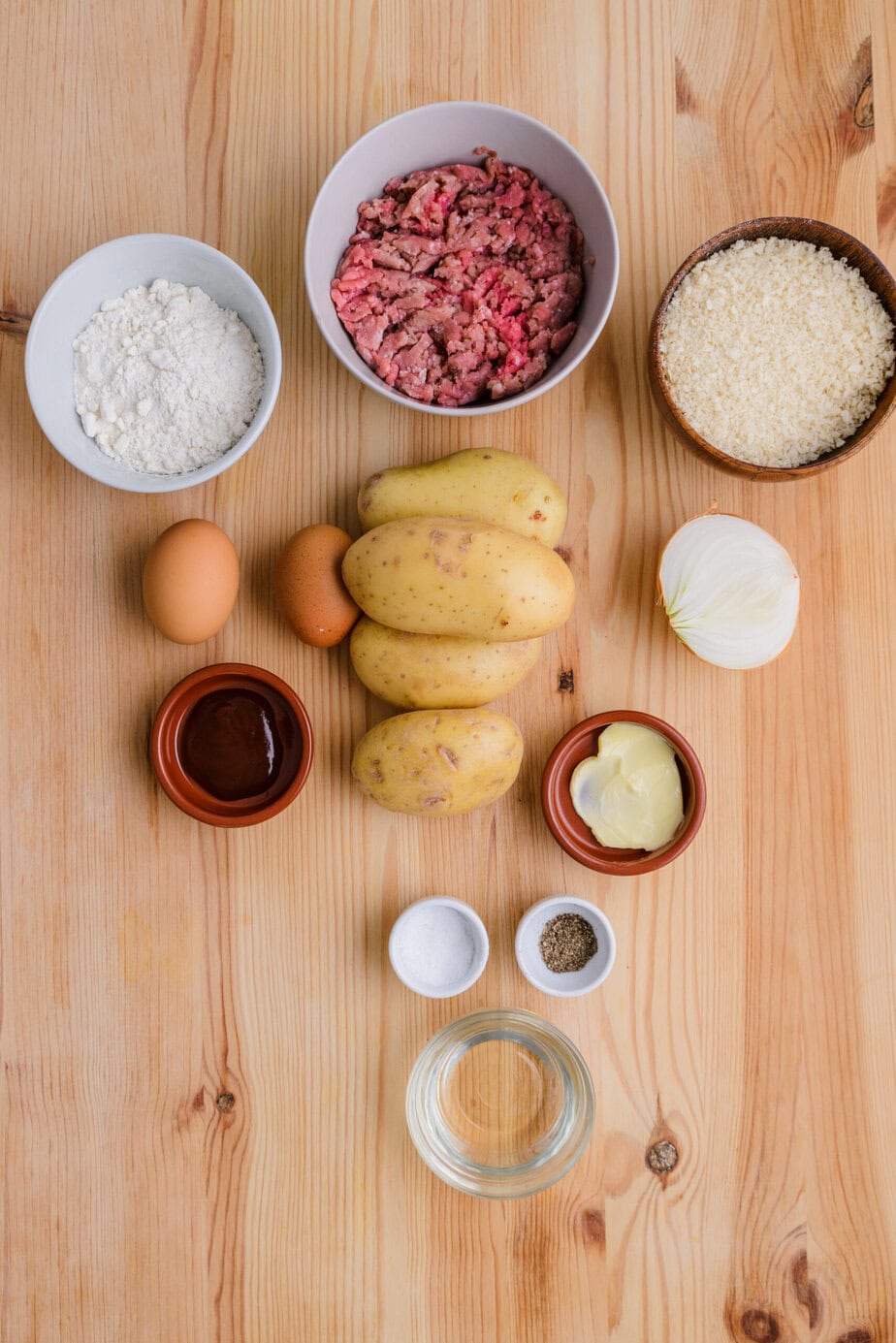
Potatoes: To make unforgettable korokke, choose starchy, floury potatoes for soft, light croquettes. They also absorb the meat and onion flavors better.
Ground beef: In the traditional recipe, the Japanese use ground beef. Here, I use ground beef with 20% to 30% fat so it isn’t too dry. Alternatively, versions with ground pork or finely chopped shiitake mushrooms are great for vegetarians.
An onion: Caramelizing and browning it builds flavor throughout the mixture.
Panko breadcrumbs: These are light, airy flakes that stay crisp after cooking, unlike standard breadcrumbs.
Tonkatsu sauce: When serving, drizzle with tonkatsu sauce.
Tips for successful Japanese croquettes
To get that play of textures we love so much in korokke, you’ll need to achieve an exceptional “hoku hoku” texture. Don’t panic; it’s all about using the right type of potato. The two main types found in Japan are “Meekuin” and “Danshaku.” Otherwise, the traditional Bintje and Charlotte (or any potato suitable for mashing) will do.
I also recommend boiling your potatoes by starting them in cold water. By letting the water and the potatoes heat up together, you’ll better preserve their shape and texture. With the density of potatoes, heat takes a long time to reach the center. So it’s best to start cooking this way to prevent the skin or outer layer from disintegrating before the inside is cooked.
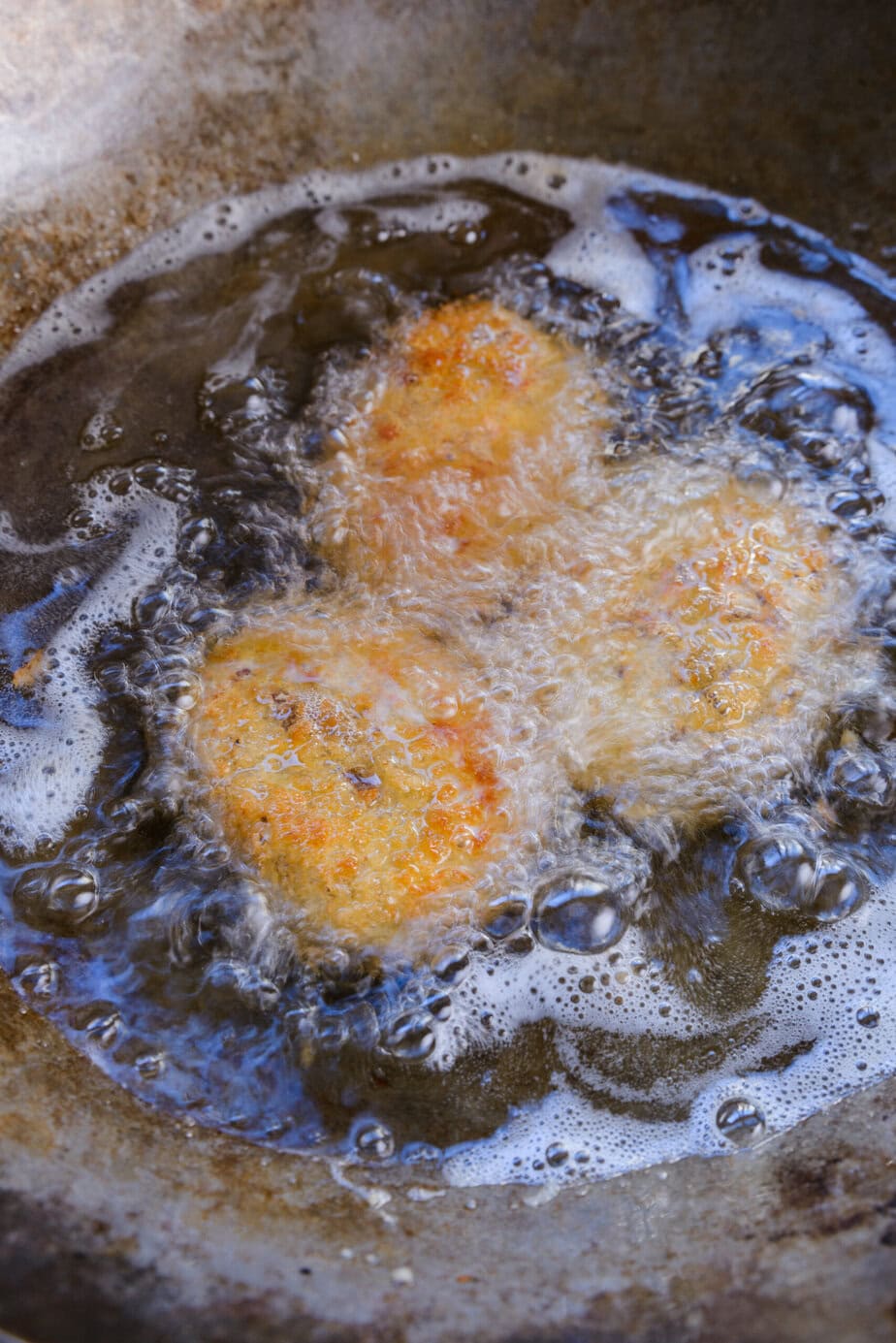
Also, while cooking the korokke, make sure no excess moisture creeps in. First, when sautéing the onion, brown it and let the moisture evaporate. Avoid adding the meat’s cooking juices when you mix everything into the potatoes. When your potatoes are cooked and drained, be sure to shake them well in a saucepan over low heat to remove the last potential traces of moisture.
While shaping the korokke after making your mash, don’t let any air pockets form. Press them firmly so they’re less likely to fall apart during cooking.
After forming your mash patties, let them cool before breading. Resting and cooling helps prevent korokke from bursting during frying and also helps the flavors meld.
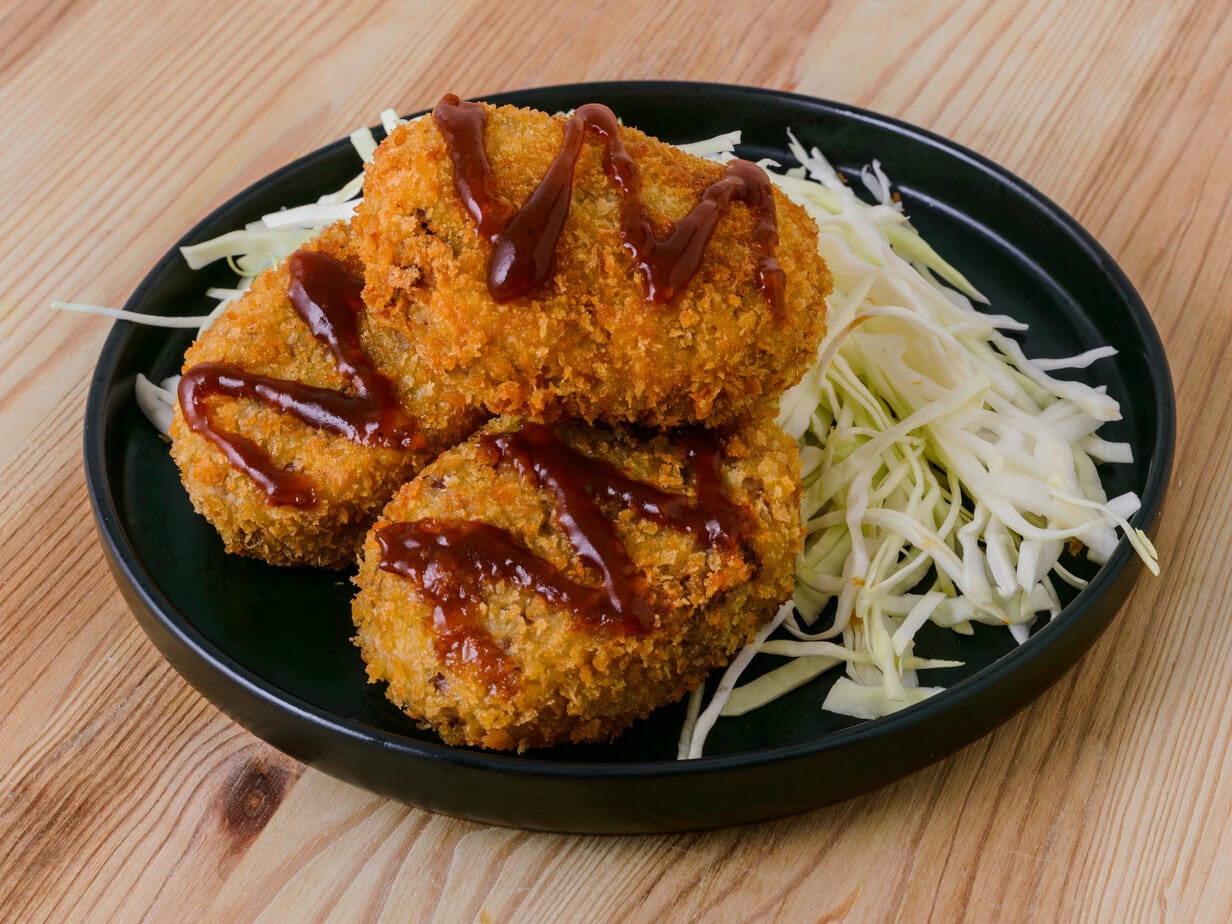
Equipment
Ingredients
For the potato and meat mixture
- 450 g potatoes
- 0.5 onion thinly sliced
- 0.5 tablespoon neutral oil
- 250 g beef ground, 20% fat
For the meat
- 0.25 teaspoon salt
- 1 pinch black pepper
- For the potatoes
- 0.5 tablespoon butter unsalted
- 0.25 teaspoon salt
- 1 pinch black pepper
For breading
- 40 g flour
- 60 g panko breadcrumbs
- 2 eggs
- For frying
- Oil enough for 5 cm of oil in the pot
Instructions
To prepare the potato and meat mixture
- Rinse the potatoes under cold water and peel.450 g potatoes
- Cut each potato into 4 equal pieces.
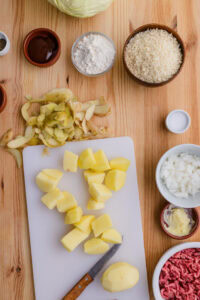
- Add water and potatoes to a large pot, cover, and bring to a boil over medium heat, leaving the lid slightly ajar to prevent boil-overs. This takes about 15 minutes. Reduce heat to maintain a gentle simmer and cook until tender, 15 to 20 minutes.
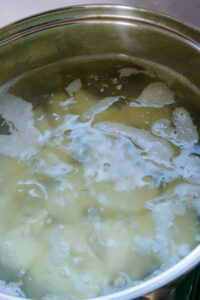
- Meanwhile, preheat a large skillet over medium heat, then add the oil.0.5 tablespoon neutral oil
- Add the sliced onion.0.5 onion
- Sauté the onion until translucent, tender, and lightly caramelized, about 10–15 minutes. Take care not to burn it. Tip: Make sure no moisture remains in the onion so the croquettes don't turn soggy. Let the onion sit a bit longer between stirs to build deeper color.
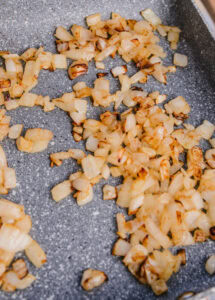
- Add the ground beef to the pan and break it up with a wooden spoon.250 g beef
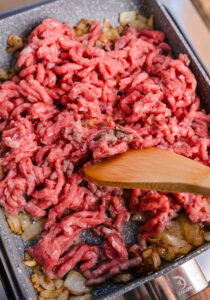
- Season with salt and pepper.0.25 teaspoon salt, 1 pinch black pepper
- Stir to combine and cook until the meat is no longer pink. Turn off the heat and set the pan aside to cool slightly.
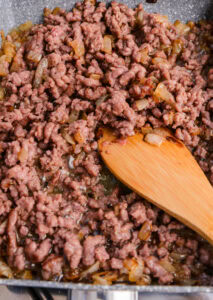
- Check the potatoes for doneness. Insert a skewer into a larger piece; if it slides in easily, they're done. Remove from the heat and drain thoroughly. Use the lid to keep the potatoes from falling out of the pot.
- Return the pot to low heat. Shake the pot gently and let any remaining moisture evaporate completely without browning the potatoes, 2 to 3 minutes. Transfer to a large bowl.
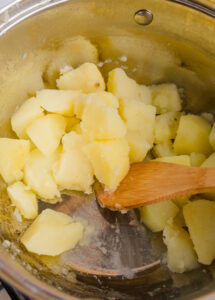
- Using a potato masher, mash the potatoes while still hot, letting the steam escape as you work. Add the butter.0.5 tablespoon butter
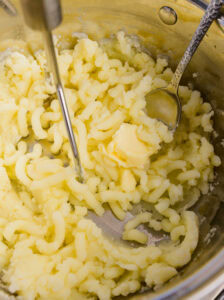
- Add the salt and black pepper and mix well.0.25 teaspoon salt, 1 pinch black pepper
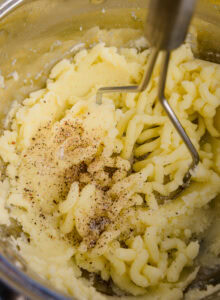
- Gently press out the liquid from the meat mixture by gathering it to one side of the pan to avoid excess moisture in the croquettes.
- Add the drained meat mixture to the bowl with the mashed potatoes and stir to combine.
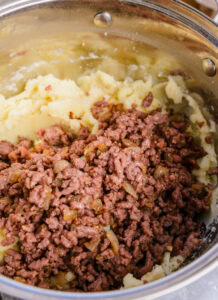
To form the croquettes
- While the mixture is still warm (not hot), shape into oval croquettes about 7.5 cm long. Avoid creating air pockets.
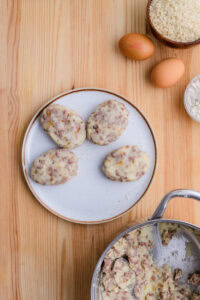
- Place the croquettes on a tray or plate. Cover and chill the Korokke in the refrigerator for 15 to 30 minutes. Don't skip this step! Tip: Chilling prevents the croquettes from bursting during frying. If they're cold, they won't build up steam that can rupture the coating. Resting also helps the ingredients meld.
To bread the croquettes
- Set up one dish for the flour and another for the panko. Crack the eggs into a small bowl and beat with a fork.40 g flour, 60 g panko breadcrumbs, 2 eggs
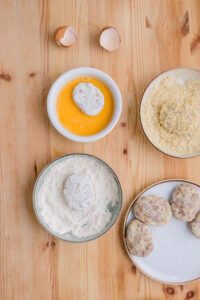
- Coat each Korokke in flour, shaking off the excess.
- Dip in the egg, then coat with panko, pressing so the crumbs adhere.
For frying
- When all the croquettes are breaded, add neutral oil to a medium pot. Ensure there is at least 5 cm of oil so the croquettes can be fully submerged.Oil
- Heat the oil to 170–180°C over medium heat. Fry 2 to 3 croquettes at a time until golden, 2 to 3 minutes. Tip: Don't move the croquettes until one side is golden. The centers are already cooked; you're just frying to color and crisp.
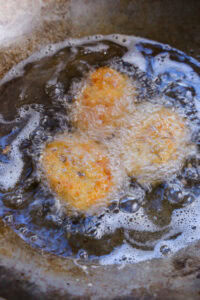
- Transfer to a rack or a paper towel–lined plate to drain excess oil. Repeat with the remaining croquettes.
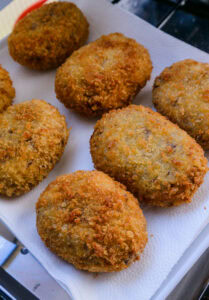
To serve
- Serve the Korokke with tonkatsu sauce drizzled in a zigzag on top.
Notes
Nutrition
Culinary sources
As the base for this recipe, I adapted the version from the English‑language blog “Just One Cookbook.” The main tweak is the meat’s fat content: in my tests, you can comfortably go up to 20% fat (as with good burgers) without producing excess grease in the croquette during frying (which could make it burst). Beyond that (25%, 30%), the croquette tends to fall apart, making frying impossible.
Another test I ran—but didn’t publish since it’s an uncommon ingredient—was adding Vietnamese shredded pork skin, dried and rehydrated (Da BI), to the filling. It was truly delicious if you enjoy the texture.
